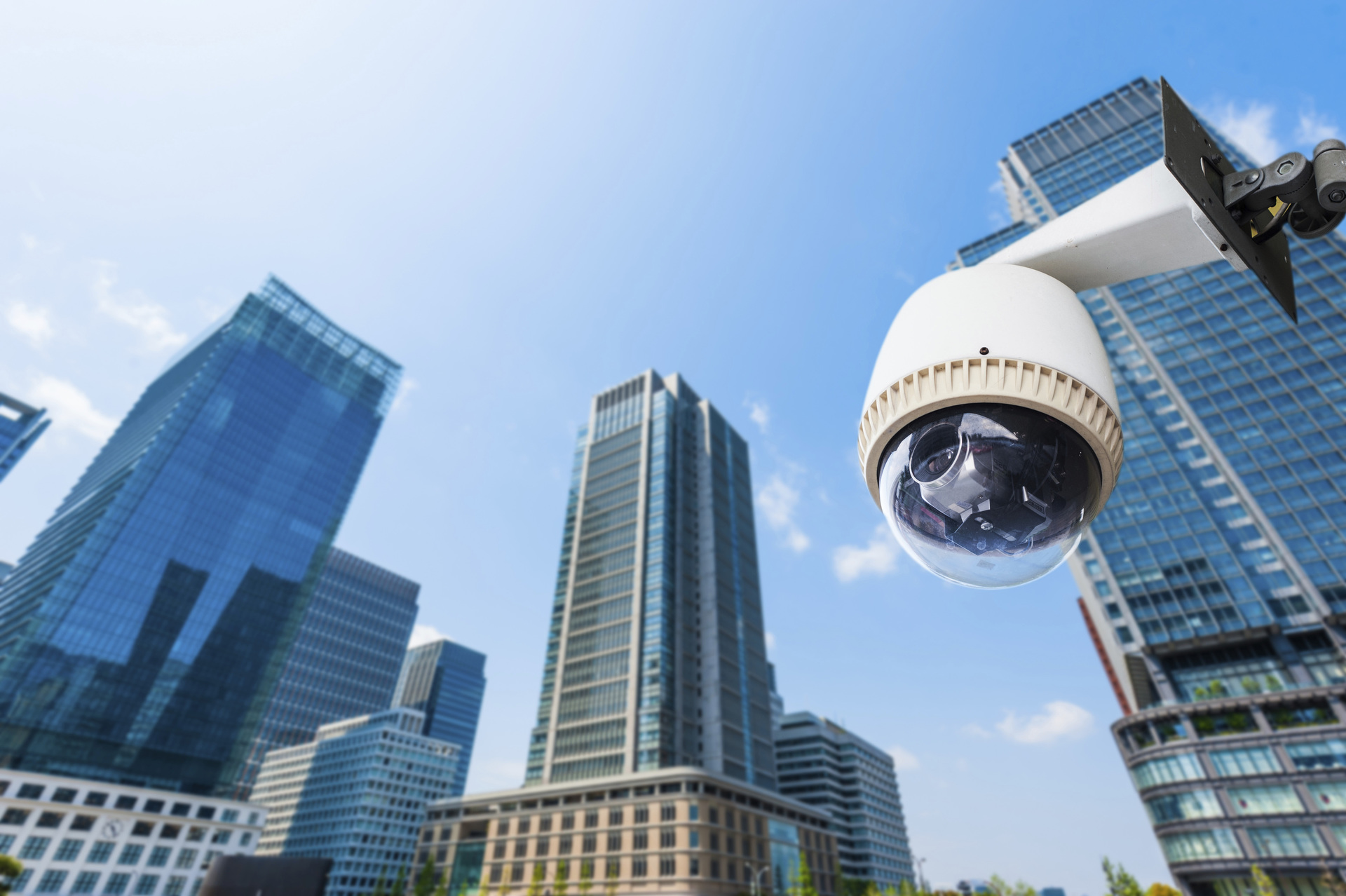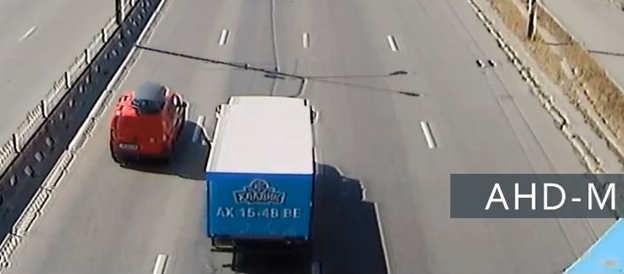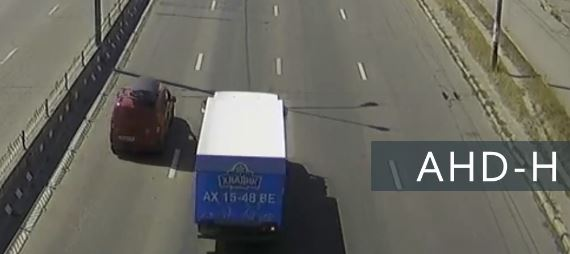AHD video surveillance - does it make sense to switch to AHD-H?

In the field of CCTV, rapid changes are taking place. Old analog video formats D1 and 960H forever disappear in the past as morally obsolete - in the modern world, few people use the technology of "yesterday", especially when it comes to security. The old analogue was replaced by AHD, HDCVI and HDTVI technologies. Their huge plus was that they were able to work with the existing infrastructure of video surveillance systems based on coaxial cable without any problems. Among these technologies, AHD, HDCVI, and slightly less than HDTVI ultimately gained maximum popularity (due to problems with proper support for the hybrid mode, when both analog and IP cameras work with the DVR at the same time). AHD and HDCVI, thanks to the obvious advantages of universality (AHD is also an open format available to everyone),
Naturally, the leading technologies of analog HD video surveillance do not stand still and continue to develop rapidly. For example, AHD technology is now just undergoing another round of technological evolution, when the widespread AHD-M (720p) recording standard is being replaced by the more progressive AHD-H (1080p) standard, which brings Full HD quality images to analog video surveillance. AHD-H cameras make it possible to see the controlled area with previously unattainable detail and clarity on AHD equipment! The AHD-H format exceeds the resolution of the traditional frame format of analog cameras D1 (720x576) by 5 times, and not so long ago considered the advanced format 960H (960x576) by 3.75 times. And even the seemingly good standard AHD-M is inferior to AHD-H 2.25 times in resolution. It is clear that, other things being equal, in a frame with twice or five times higher resolution, you can see much more fine details and subtle nuances than in a smaller image. This is a very convincing “theoretical” argument in favor of switching to AHD-H technology. But what is this advantage in practice, is it really noticeable? Let's try to check!
Equalization on AHD-H
While the new AHD-H equipment is not too widespread in the market. If we talk about Ukraine, at the time of writing the article AHD-H, video equipment was available only from one company (by the way, this is the same company that at the time was the first to bring real honest AHD (AHD-M) equipment to the Ukrainian market, whereas many did not disdain to trade the so-called AHD-L standard, which essentially represented the standard 960H renamed to suit the situation, was used by Chinese recorders and cameras). But saturation of the market is a matter of time, something else is more important to us, namely, that this company gives its partners and regular customers the opportunity to try a “hot” novelty. As a regular customer of this company, we could not miss the opportunity and took the Tecsar AHDW-2M-20F camera for 2MP AHD test (http://secur.ua/videonablyudenie/analoghd/ahdcams/AHDW-2M-20F.html ) paired with the Tecsar B84-2FHD2P-H registrar ( http://secur.ua/videonablyudenie/analoghd/ahdvideoregi/TecsarB84-2FHD2P -H.html ) to personally assess for yourself the relevance of switching to AHD-H.
Our team, responsible for the security shooting of all kinds of outdoor events "in nature" (and the areas there are usually considerable and high detail is more important than when shooting in a small room), armed with new AHD-H equipment, went to test it. Actually, this is what came of it. During testing, the guys settled on the bridge over the busy Moscow Avenue and shot this video. Here, just all the charms of working in real conditions are an excellent shaking from transport passing along the bridge.
In the video with the naked eye, it is perfectly visible that the D1 cameras do not stand up to criticism, they are banally unable to produce such a high-quality image that important details can be discerned on the frames - the brand of the car (not to mention the number), small elements of the environment, the movement of people away and etc. AHD-M video surveillance, thanks to a much higher resolution, improves the situation, but some small details in the image are still not clearly visible. And only AHD-H dramatically changes the image for the better!



Look at the clarity of the display of the number of the passing car on snapshot fragments from each clip - not a single camera except AHD-H allowed to make out the number so clearly that it recognizes all the numbers and letters without a doubt. This is the most obvious demonstration of the real benefits of AHD-H. (For perfectionists, who are already starting to get together like "all this is nonsense, ordinary autonomy is still not visible on cars anyway" I’ll say that the question of a detailed examination of license plate numbers on passing vehicles is just a matter of changing the camera’s lens. In this case, everything the cameras were tested with a standard complete lens with a focal length of 3.6 mm / F2.0. In addition, the distance to the car here is quite large - a high bridge, plus the camera’s installation angle is not like that at all,
Obviously, equipment of the AHD-H class really demonstrates a significantly sharper picture with good distinguishability of details. Plus, the AHD-H frame has the same Full HD resolution as the screens of many modern monitors and TVs. This allows you to see a perfectly sized image without geometric distortion and interpolation, which has the most positive effect on the ease of use of a video surveillance system.
By the way, if the readership wants to see the original videos from which this video was mounted, I can post it separately, although in essence there will be absolutely no additional benefit from them.
AHD cameras versus IP
It is not surprising that in the world of the widespread domination of “digital” technologies, many, without hesitation, prefer digital IP cameras. Of course, no one argues about the great prospects of IP cameras. But still, these cameras have a couple of “sins” that make them far from the best choice for security surveillance systems ...
So, a new generation of analog cameras, including AHD-H ( http://secur.ua/videonablyudenie/analoghd/ahdcams /), capable of transmitting a video signal without significant distortion through a coaxial cable up to 300 m long (this is officially according to the specification), and even more (for the AHD-M cameras, the 800 m version was tested and proved to be fully functional) without the use of intermediate signal amplifiers. And what about the “advanced” digital IP cameras? They are limited to an Ethernet cable length of 100 meters. Well, the maximum that can be pulled out without critical interference - 120 meters. It is absolutely clear that such a significant restriction on the cable length does not allow digital cameras to be installed in the right places on a large object without additional tricks and extra costs. After all, the cable going to the camera is usually forced to follow the bends of the walls indoors, as a result of which it substantially “lengthens”. And 100 meters may not be enough. Also, when it comes to outdoor video surveillance (for example, monitoring a private area with a large area), the use of intermediate signal amplifiers is often not possible at all. And in this case, the option of IP cameras simply disappears. Stand-alone digital Wi-Fi cameras are also not an option - such a solution is a priori unsuitable for a more or less serious security system. And even if you can use all kinds of intermediate amplifiers in the room (such as hubs with autonomous power supply or even PoE technology support), you need to understand that any additional electronic elements greatly reduce the reliability of the video surveillance system. However, a small distance is not the most significant “sin” of IP cameras. the use of intermediate signal amplifiers is often not possible at all. And in this case, the option of IP cameras simply disappears. Stand-alone digital Wi-Fi cameras are also not an option - such a solution is a priori unsuitable for a more or less serious security system. And even if you can use all kinds of intermediate amplifiers (such as hubs with autonomous power supply or even PoE technology support), you need to understand that any additional electronic elements greatly reduce the reliability of the video surveillance system. However, a small distance is not the most significant “sin” of IP cameras. the use of intermediate signal amplifiers is often not possible at all. And in this case, the option of IP cameras simply disappears. Stand-alone digital Wi-Fi cameras are also not an option - such a solution is a priori unsuitable for a more or less serious security system. And even if you can use all kinds of intermediate amplifiers in the room (such as hubs with autonomous power supply or even PoE technology support), you need to understand that any additional electronic elements greatly reduce the reliability of the video surveillance system. However, a small distance is not the most significant “sin” of IP cameras. And even if you can use all kinds of intermediate amplifiers in the room (such as hubs with autonomous power supply or even PoE technology support), you need to understand that any additional electronic elements greatly reduce the reliability of the video surveillance system. However, a small distance is not the most significant “sin” of IP cameras. And even if you can use all kinds of intermediate amplifiers (such as hubs with autonomous power supply or even PoE technology support), you need to understand that any additional electronic elements greatly reduce the reliability of the video surveillance system. However, a small distance is not the most significant “sin” of IP cameras.
The biggest problem in IP video surveillance is the transmission of an image with a time delay. To digitize an image, break it into packets and transmit it over the network, the camera objectively needs a certain amount of time. Whereas analog cameras, including AHD, do not digitize video and always broadcast the image in real time without noticeable delays. For example, even in a small local area network that uses only 1 switch, video from the IP camera can be “delayed” for 2-4 seconds relative to the AHD camera. It would seem, well, what is a couple of seconds? This is quite a bit! But let's use the objective language of numbers - we’ll try to calculate how much time an attacker can cover in this seemingly insignificant time.
Slow step 0.5 m / s: distance 1 - 3 m (for 2 and 4 seconds, respectively);
Quick step 1.2 m / s: distance 2.4 - 4.8 m;
Running 4 m / s: distance 8 - 16 m;
Fast run 7 m / s: 14 - 28 m.
As a simple mathematical calculation shows, during the time the IP camera “deigns” to transmit video, even with just a quick step, an attacker can go a considerable distance of about 5 m, leaving not only the camera’s field of view, but also the territory of a small store. And if the offender goes on the run, then by the time the guards only notice an alarming event on the screen of the IP video surveillance system, the thief may well leave the boundaries of a large building and get lost somewhere on the street. And we did not even take into account that in large or busy networks, as well as with an increase in video resolution, the image delay from IP cameras increases significantly. Let's say even more - if a certain person flashes quickly in front of the lens, the IP camera may not record this event in the video sequence at all! This is the infamous “frame loss” of IP cameras, because of which the guard will not see the alarm event on the video surveillance monitor at all. All of the above casts doubt on the appropriateness of using IP cameras in security systems, where the speed of response to an event is one of the most important criteria. After all, okay, petty thief, but imagine that armed robbers or terrorists burst into the room. The unfortunate guard can feel the trunk at the back of his head before he sees a picture from the IP camera, indicating that an alarming event has occurred. To prove all of the above, we give a video where a 2MP IP camera (image below) and a 2MP AHD-H camera (image above) shoot the same scene. Events are shot in real time when the image is displayed on the TV,
If this video made you think, then we assure you that the transition from “brooding” IP to fast AHD cameras is much easier than many people think. At the same time, there is no need to change the cable infrastructure: AHD-H cameras work perfectly on the same Ethernet cable as the IP cameras. And even the power for AHD cameras can be arranged on the same wire (since only one pair of 2 wires is used to transmit the video signal, another pair can be used for power). Moreover, on one 8-wire Ethernet cable, you can “screw” several AHD cameras at once (up to 2 with power transmission and up to 4 without power transmission), if necessary. The only thing is that AHD cameras need a compatible DVR ( http://secur.ua/videonablyudenie/analoghd/ahdvideoregi/) While IP cameras can do without it, recording directly to a computer, cloud service or mobile device. AHD cameras can also write to a computer, cloud service or mobile device - but exclusively through a DVR.
conclusions
To summarize. So, does it make sense to switch to AHD-H? There is definitely one if the surveillance system still uses old analog cameras of D1 or 960H standards. In this case, you will get much higher image quality, and without the need to change the already used cable infrastructure. If “slow” IP cameras are used in security surveillance, then there will also be a benefit from using AHD-H: thanks to real-time image broadcasting, security will be able to quickly respond to incidents, which will reduce losses from theft, vandalism and other offenses.
Actually, the use of AHD-H equipment is more than relevant at any facility: from small private shops to huge warehouses, from the private courtyard of a country house to the vast territory of a large industrial enterprise. Moreover, the AHD-H technology makes it possible to obtain a video image not only quickly, but also with excellent quality, quite comparable with the picture quality of more expensive IP cameras.
Plus, on the basis of AHD-H video recorders, it is easy to build hybrid video monitoring systems in which cameras of various generations, standards and resolutions can be used. So, areas that are not too critical in importance can be controlled with the help of old analog cameras - they will not have to be written off. But in important areas or in high-risk areas, high-resolution AHD-H cameras and IP cameras can be used simultaneously.
The equally reliable operation of AHD-H cameras on a coaxial or Ethernet cable allows the use of such cameras in any existing video surveillance system without costly changing the cable infrastructure. And since the deployment and management of AHD video surveillance systems is much simpler than IP-based solutions, plus AHD cameras are also significantly cheaper than digital ones, AHD-H technology is a good option in the current difficult economic situation, when the private sector and companies have to save on costs, including safety.
PS As an additional educational material, we provide a link to the video recorded by the Tecsar AHDW-2M-20F AHD-H camera -
